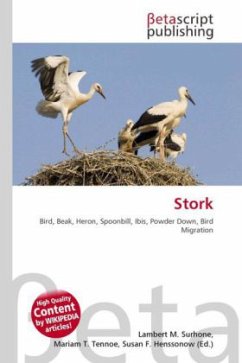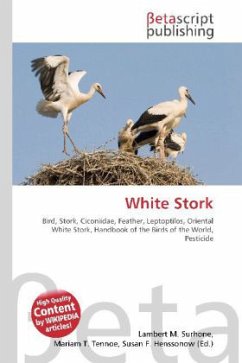High Quality Content by WIKIPEDIA articles! Storks are large, long-legged, long-necked wading birds with long stout bills, belonging to the family Ciconiidae. They are the only family in the biological order Ciconiiformes, which was once much larger and held a number of families. They occur in most of the warmer regions of the world and tend to live in drier habitats than the related herons, spoonbills, and ibises; they also lack the powder down that those groups use to clean off fish slime. Storks have no syrinx and are mute, giving no bird call; bill-clattering is an important mode of stork communication at the nest. Many species are migratory. Most storks eat frogs, fish, insects, earthworms, and small birds or mammals. There are 19 living species of storks in six genera. Storks tend to use soaring, gliding flight, which conserves energy. Soaring requires thermal air currents. Ottomar Anschütz's famous 1884 album of photographs of storks inspired the design of Otto Lilienthal's experimental Gliders of the late 19th century.
Bitte wählen Sie Ihr Anliegen aus.
Rechnungen
Retourenschein anfordern
Bestellstatus
Storno








